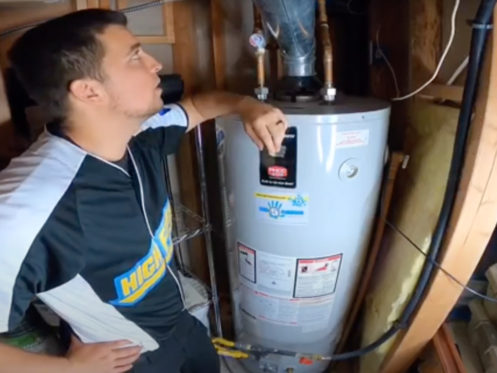How to Care for Your Home's Hot Water System EffectivelyBest Practices for Caring for Your Home's Hot Water System
How to Care for Your Home's Hot Water System EffectivelyBest Practices for Caring for Your Home's Hot Water System
Blog Article
Are you on the lookout for related information around Water Heater Maintenance Tips You Can't Afford to Forget?

Hot water is necessary for day-to-day convenience, whether it's for a refreshing shower or washing dishes. To ensure your warm water system runs successfully and lasts longer, routine upkeep is vital. This short article supplies sensible tips and insights on exactly how to keep your home's warm water system to stay clear of disturbances and costly repair work.
Intro
Preserving your home's hot water system could appear daunting, but with a few basic actions, you can guarantee it runs smoothly for years to come. This guide covers whatever from understanding your hot water system to DIY maintenance ideas and understanding when to contact expert assistance.
Value of Keeping Your Warm Water System
Normal upkeep not just extends the lifespan of your hot water system but also ensures it operates successfully. Disregarding upkeep can bring about lowered effectiveness, higher energy expenses, and even premature failure of the system.
Indications Your Hot Water System Needs Maintenance
Knowing when your hot water system needs focus can protect against major problems. Watch out for indicators such as irregular water temperature level, odd sounds from the heating unit, or rustic water.
Flushing the Water Heater
Flushing your hot water heater gets rid of debris accumulation, enhancing efficiency and prolonging its life.
Checking and Changing Anode Rods
Anode rods prevent corrosion inside the storage tank. Examining and replacing them when worn out is crucial.
Facility Concerns Calling For Expert Help
Examples consist of significant leaks, electrical troubles, or if your hot water heater is constantly underperforming.
Regular Expert Maintenance Perks
Expert maintenance can consist of complete evaluations, tune-ups, and ensuring conformity with security standards.
Evaluating and Changing Temperature Setups
Changing the temperature setups makes sure ideal efficiency and safety.
Do It Yourself Tips for Upkeep
You can do several upkeep jobs yourself to maintain your hot water system in leading problem.
Checking for Leakages
Routinely check pipes and links for leaks, as these can bring about water damage and higher costs.
Comprehending Your Warm Water System
Before diving right into maintenance jobs, it's helpful to recognize the basic parts of your hot water system. Commonly, this includes the hot water heater itself, pipes, anode poles, and temperature controls.
Month-to-month Maintenance Tasks
Normal regular monthly checks can aid catch small issues prior to they escalate.
Checking Stress Relief Valves
Checking the pressure safety valve guarantees it works appropriately and avoids too much pressure buildup.
Protecting Pipelines
Shielding hot water pipes lowers heat loss and can conserve power.
When to Call a Professional
While do it yourself maintenance is useful, some problems call for professional competence.
Verdict
Regular upkeep of your home's hot water system is necessary for performance, longevity, and cost savings. By complying with these pointers and knowing when to seek specialist aid, you can guarantee a trustworthy supply of warm water without unexpected disruptions.
Water Heater Maintenance Tips
Test the TPR Valve
Shut off the power and the cold-water supply valve. Place a bucket under the pipe connected to the temperature-pressure-release (TPR) valve on the top or side of the tank. (This valve opens if the tank pressure gets too high.) Lift the valve’s tab to let some water out, then let go. If water keeps flowing, drain the tank partway, unscrew the old valve with a pipe wrench, and install a new one. Check the Anode Rod
Put a hose to the tank’s drain cock and let out a few gallons of water. Now fit a 1 1/16-inch socket onto the rod’s hex head on top of the heater (or under its top plate) and unscrew the rod. If it’s less than ½ inch thick or coated with calcium, buy a new one, wrap its threads with Teflon tape, put it back in the tank, and tighten securely. Use this segmented rod if headroom above the tank is limited. Drain the Tank and Wash Out Sediment
Drain the remaining water in the tank into the bucket, then stir up the sediment on the tank’s bottom by briefly opening the cold-water supply valve. Drain and repeat until clean water comes out of the hose. Close the drain cock, refill the tank, and turn its power back on. Adjust the Temperature
Find the temperature dial on the side of the tank and unscrew its cover. Adjust the dial to 120 degrees using a flathead screwdriver. For every 10 degrees the temperature is lowered, you can expect to save up to 5 percent in energy costs. Turn the water heater off or the thermostat down to its lowest setting if you plan to be away from home for more than three days. Insulate the Pipes
Buy some self-sticking 3/8-inch-thick foam pipe insulation that matches the pipes’ diameter. Slide the foam over the hot-and cold-water pipes as far as you can reach. Insulating the cold-water pipe prevents condensation in summer. Peel the tape and squeeze the insulation closed. If the pipe is 6 inches or less from the flue, cover it with 1-inch-thick unfaced fiberglass pipe wrap. https://www.thisoldhouse.com/plumbing/21016402/how-to-maintain-a-water-heater

Do you appreciate reading about How to Maintain a Hot Water Heater in a Few Simple Steps? Put a remark directly below. We'd be glad to listen to your responses about this post. Hoping that you visit us again soon. Sharing is nice. Who knows, you may just be helping someone out. Bless you for being here. Don't forget to check our website back soon.
Call Today Report this page